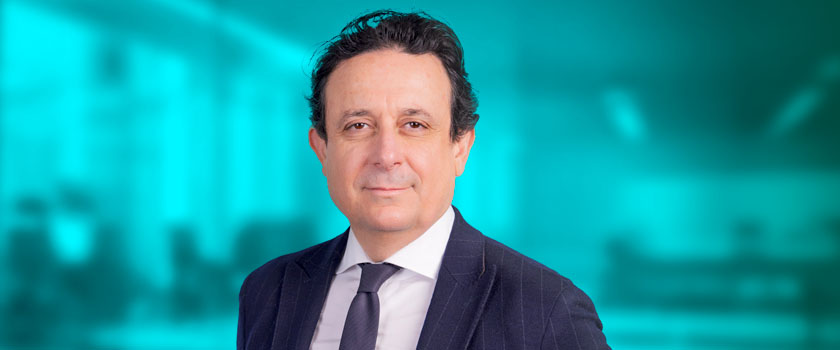Finanz und Wirtschaft (19.01.2021) - Norman Villamin, CIO Wealth Management von Union Bancaire Privée, hält die Furcht vor deutlich höheren Zinsen für verfrüht. Er zieht Bergbautitel den Bankaktien vor.
1. When did UBP start its journey on impact investing? Why impact investing? What makes it different from other sustainable choices?
It all started in 2016, following the launch of the UN’s Sustainable Development Goals (SDGs), which provided a roadmap for addressing the most pressing issues facing our society by 2030 and beyond. According to the UN, getting there will require an estimated annual investment of 5–7 trillion US dollars. That said, there is still much confusion about what separates “impact” from other sustainable investment strategies. ESG (environment, society, and governance) investing typically focuses on a company’s operations, whereas impact investing focuses on its output, whether products or services. ESG criteria are used to assess how well a company is run, but they say nothing about the effects of its business on the world. In impact investing, it is critical that making a positive and purposeful impact should be part of the company’s business model.
2. Have you seen growing interest from investors in impact investing this year? Do you think the pandemic has accelerated this trend?
The world is changing fast and people are increasingly aware of the challenges we are facing as human beings – like climate change, pollution and rising inequalities. The ongoing Covid-19 pandemic is only exacerbating the sense of emergency. At UBP, we have indeed seen growing interest in impact investing among clients. This has had a direct effect on the size of our impact platform with assets under management more than tripling in 2020 to reach the EUR 300 million mark at the end of November.
On 7 May 2020, to complement our existing impact equity strategy, we launched the Positive Impact Emerging Equity strategy: over and beyond its social impact, it is a rational approach for investors because companies that help to solve emerging markets’ problems could well experience faster growth, a stronger regulatory tailwind and potentially superior profitability.
3. What’s your investment philosophy when it comes to this kind of funds? How do you incorporate the SDGs?
The Positive Impact investment process focuses on the enablers and fixers addressing many of the world’s problems as set out in the UN SDGs. It is our belief that over the medium and long term, the world’s demand for these solutions will only grow and indeed needs to grow. Logically therefore, it holds that our investment focus should allow us to identify a portfolio of companies that will grow faster than broad equity benchmarks. To do so, we needed to establish a methodology: we benefited from our collaboration with the Investment Leaders Group (‘ILG’, facilitated by the Cambridge Institute for Sustainability Leadership) to address the UN’s SDGs through 6 themes (Climate Stability, Healthy Ecosystems, Sustainable Communities, Basic Needs, Health & Wellbeing and Inclusive & Fair Economies). Each theme represents a number of SDGs and sub-goals. This allows for real efficiency in the investment approach as the hunt for ideas is led from these areas, rather than the more traditional ‘GICS’ sector or geographic breakdown.
4. How does your stock-picking process work and how do you build your portfolio? Which sectors and countries do you overweight?
The selection of each company is based on our degree of conviction in its impact intensity, on a financial rationale, as well as on the risk profile of the stock, including ESG concerns.
SDGs and the pressures they are intended to solve are global not regional, so the goal is to invest in the best solution for a given SDG, wherever that company is listed – this includes both developed and emerging markets. Nevertheless, we noticed that the European market offers a superior pool of impact companies and this has resulted in a European bias in the strategy, although our largest country exposure is the US.
Last but not least, the strategy has a growth bias, but interestingly the drivers of growth behind our impact strategy differ from traditional growth portfolios, often relying on the technology sector. Effectively, growth on the impact side comes from three pillars: innovation, changes in regulation and demand from consumers. This has led to overweight sectors like industrials and materials.
5. Which are the main risks investors may face when investing in equities with an impact perspective? What opportunities can those companies offer?
To access the purest solution-providers – or “fixers” – of our planet’s biggest problems, impact investing through listed equities creates a natural small- and mid-cap bias. We believe that this bias offers an additional potential source of return, especially when optimally blended with a client’s portfolio to improve the risk–return ratio.
Additionally, impact investing helps reduce the risk of ending up with stranded assets. Coal companies are finding it increasingly difficult to survive as going concerns and this raises interesting questions for other fossil fuel producers and extractive industries. By entirely avoiding some of the most problematic sectors, impact investing is an excellent way of protecting investors against this risk.
For example, Hoffman Green Cement, which is seeking to industrialise heat-free cement, is an interesting case. The cement industry is responsible for 8% of carbon dioxide emissions. Significantly, if it was a country, it would be the third most polluting in terms of CO2 after China and the United States. The unique characteristics of Hoffman’s cement solution can save 80% of the energy used in the traditional cement-making process.
6. Do you think impact investing is here to stay?
In the midst of the ongoing public health crisis, which is having such devastating effects, the long-term importance of impact investing is clearer than ever, since it is one of the ways we can address areas in which we are falling short of our social goals. We believe that companies helping to solve the acute challenges faced by society and the planet are ideally positioned for steady growth over the coming decades.
According to the Global Impact Investing Network (GIIN), the impact market, which had doubled in 2018, continued its solid growth in 2019, reaching USD 715 billion globally by the end of the year. This meteoric growth points to the beginning of a shift in preferences towards impact investing, but this journey has only just started, and it is our duty to engage with our clients and make them aware of the benefits of impact investing.









